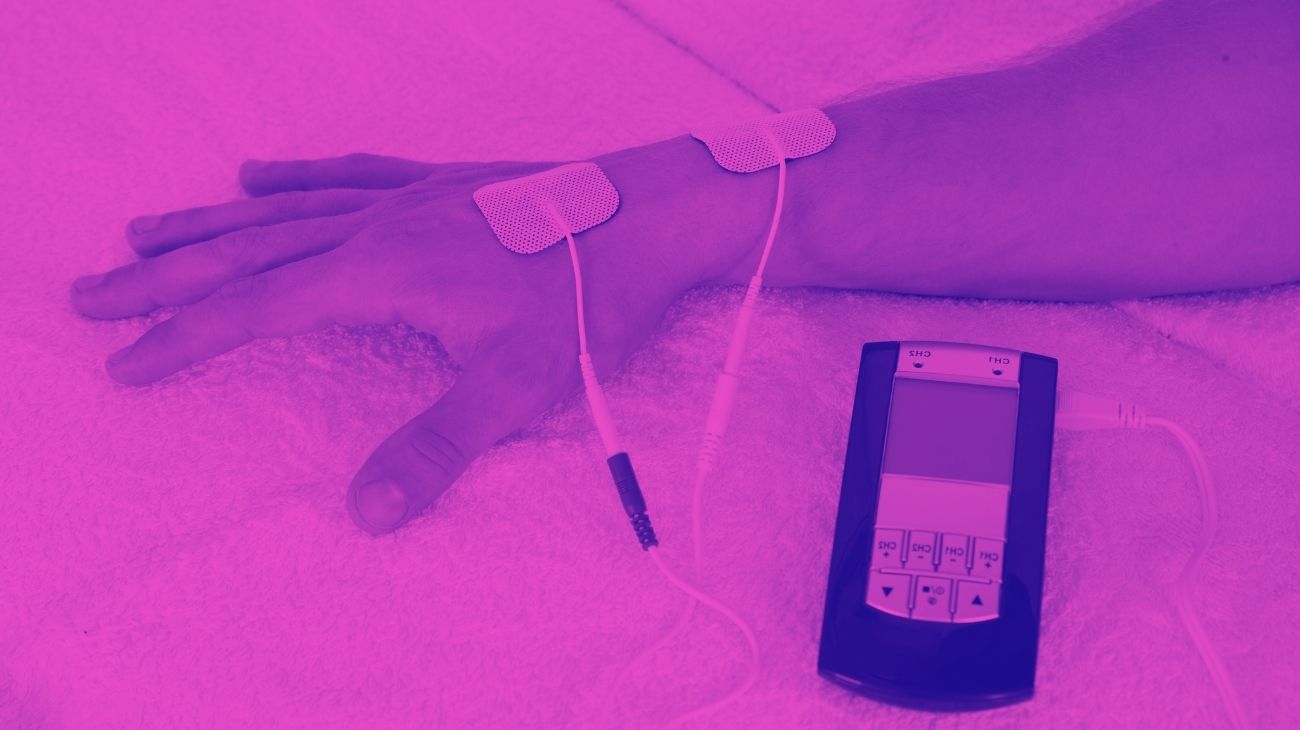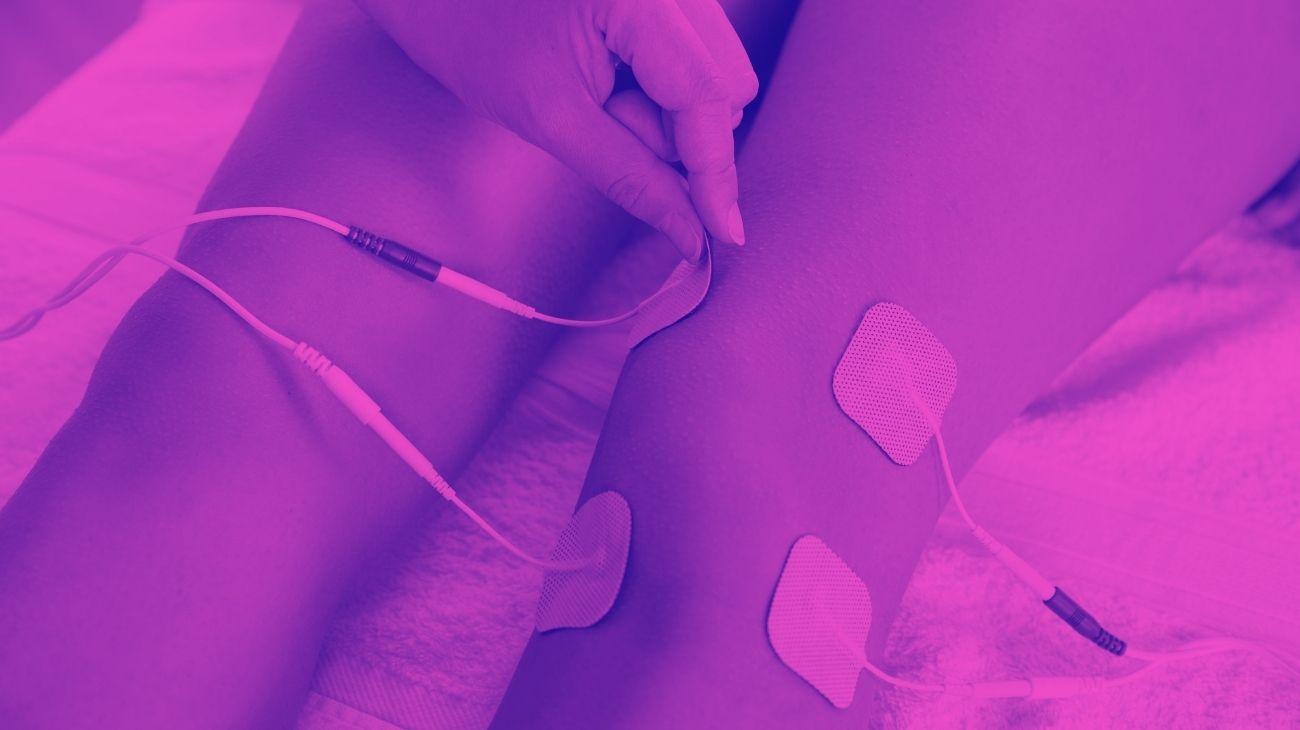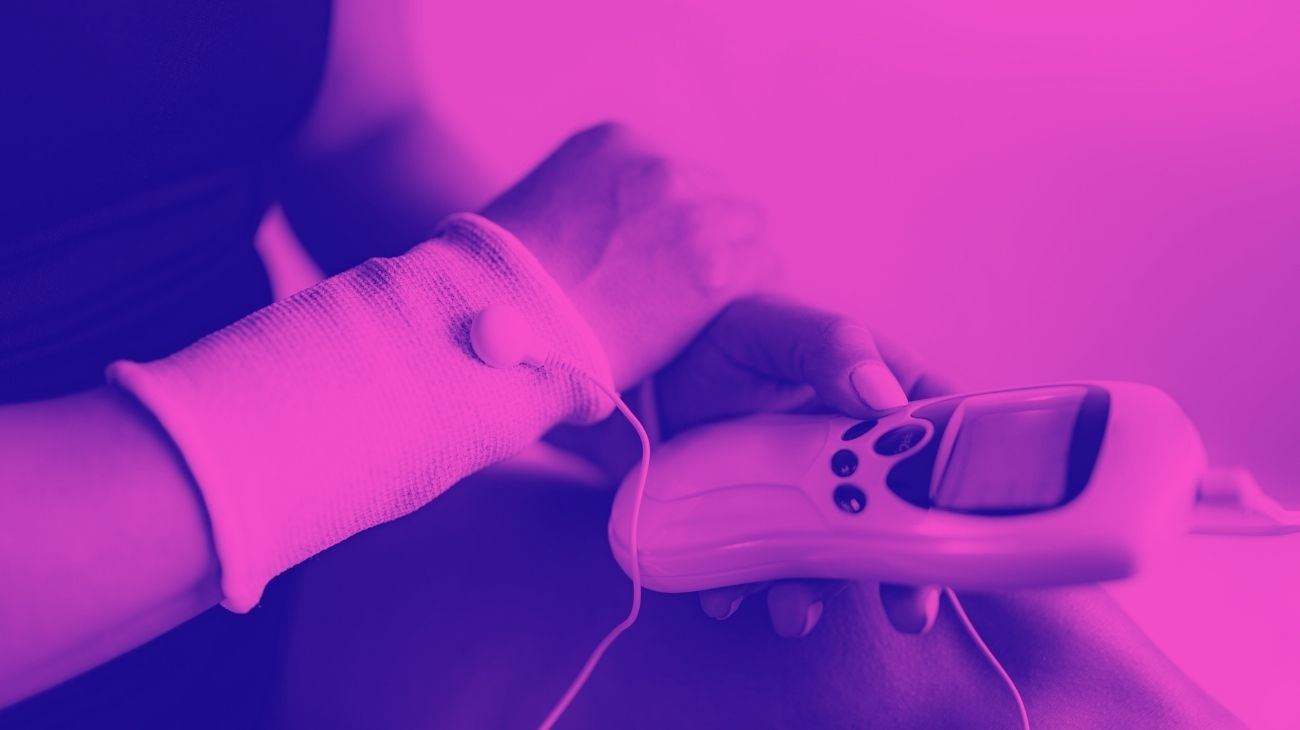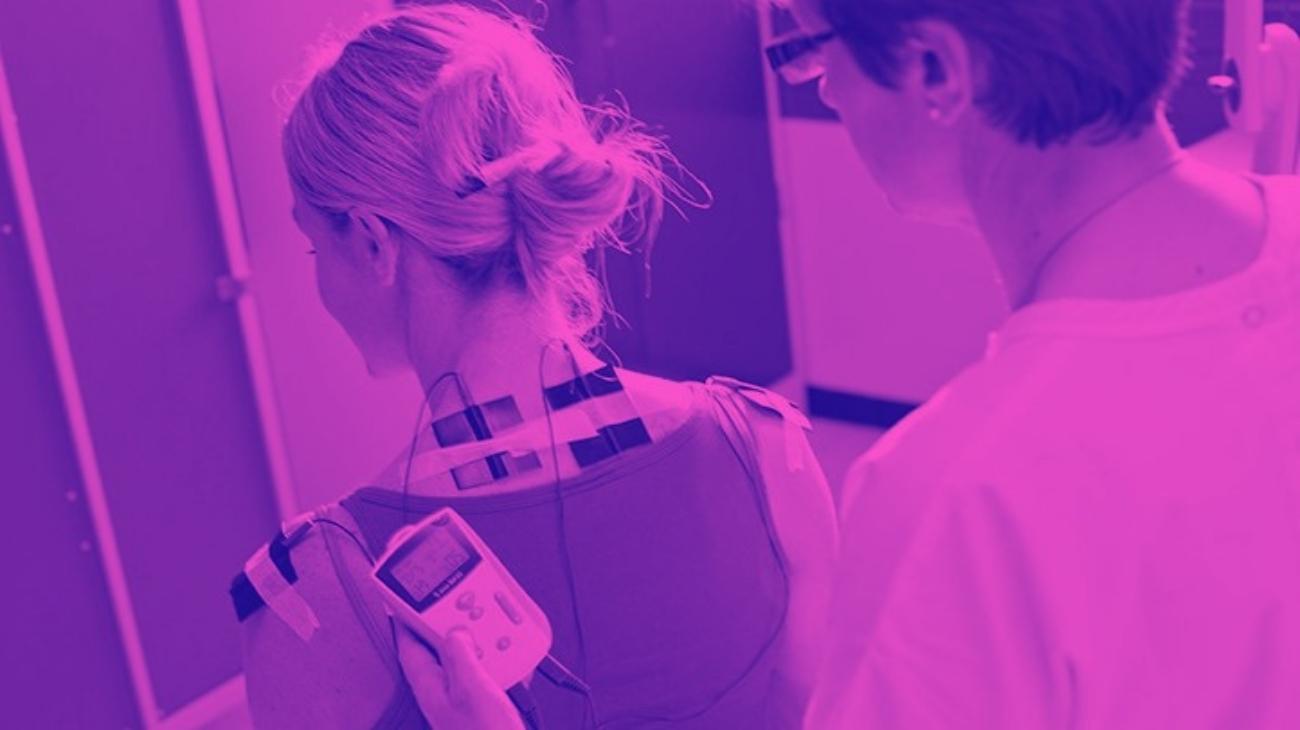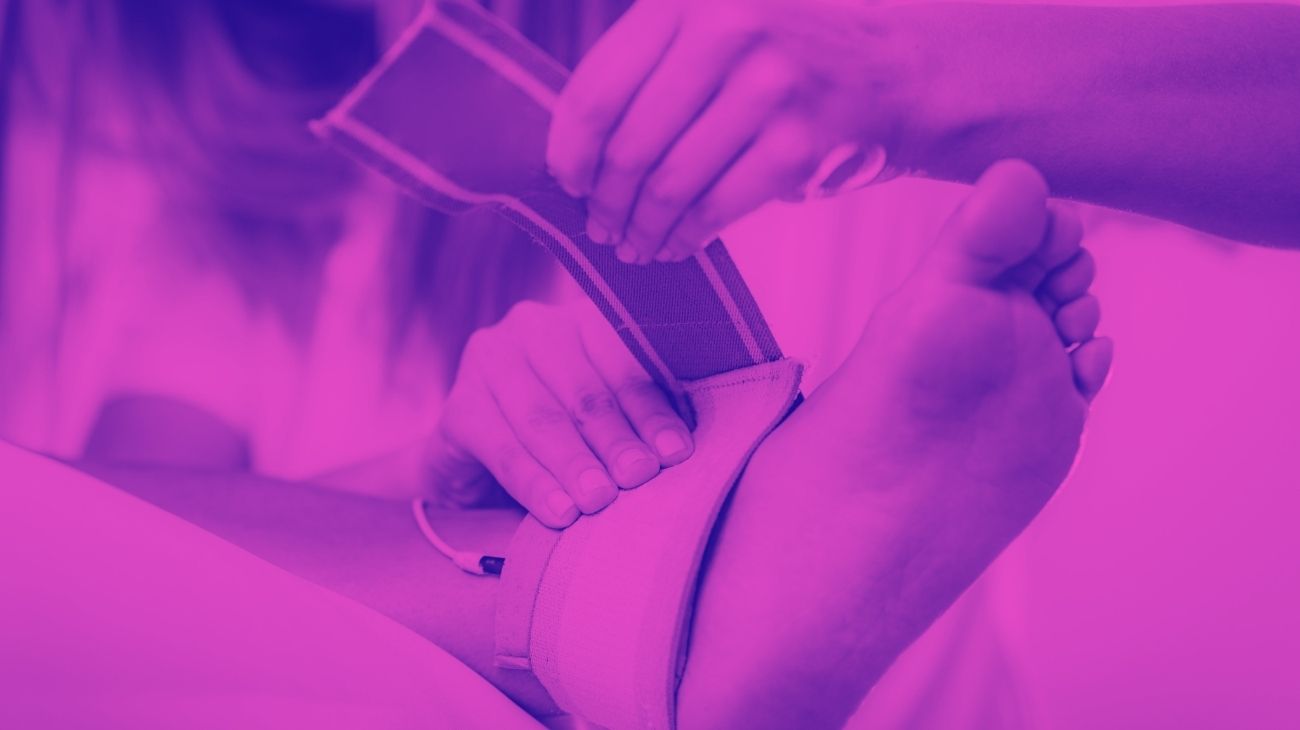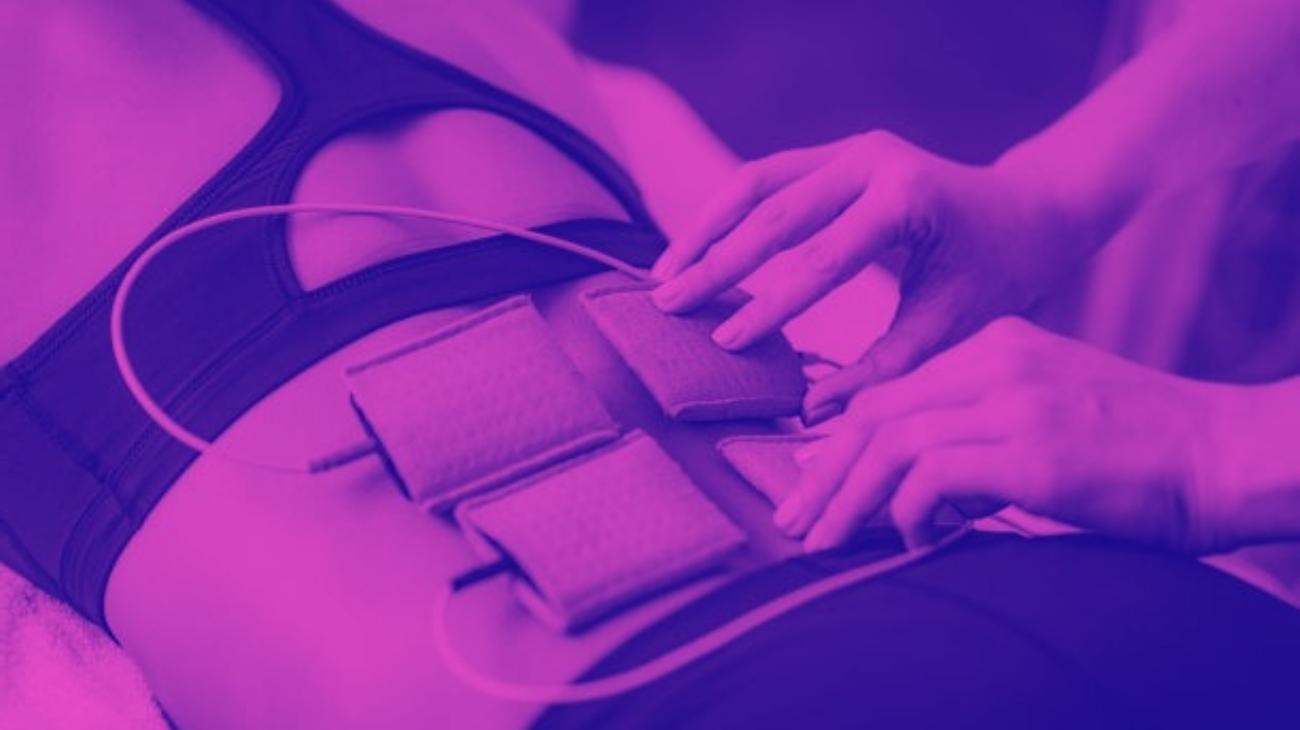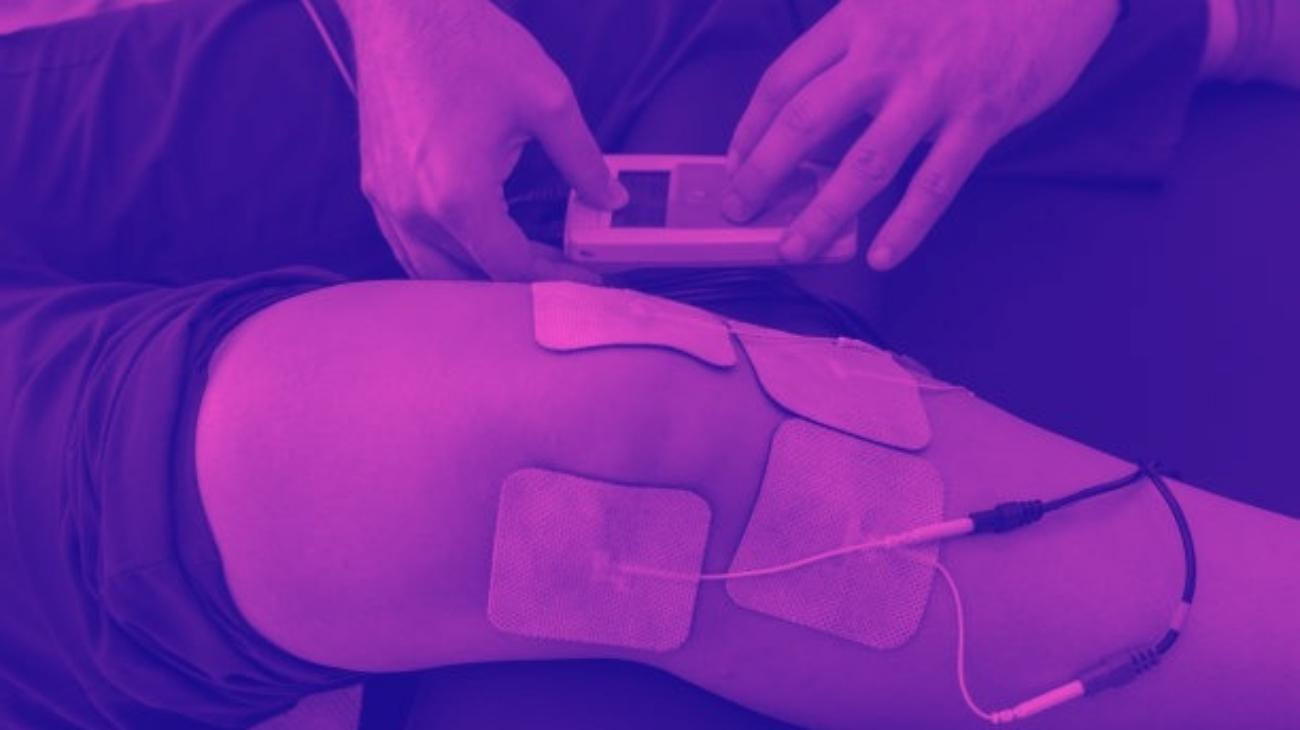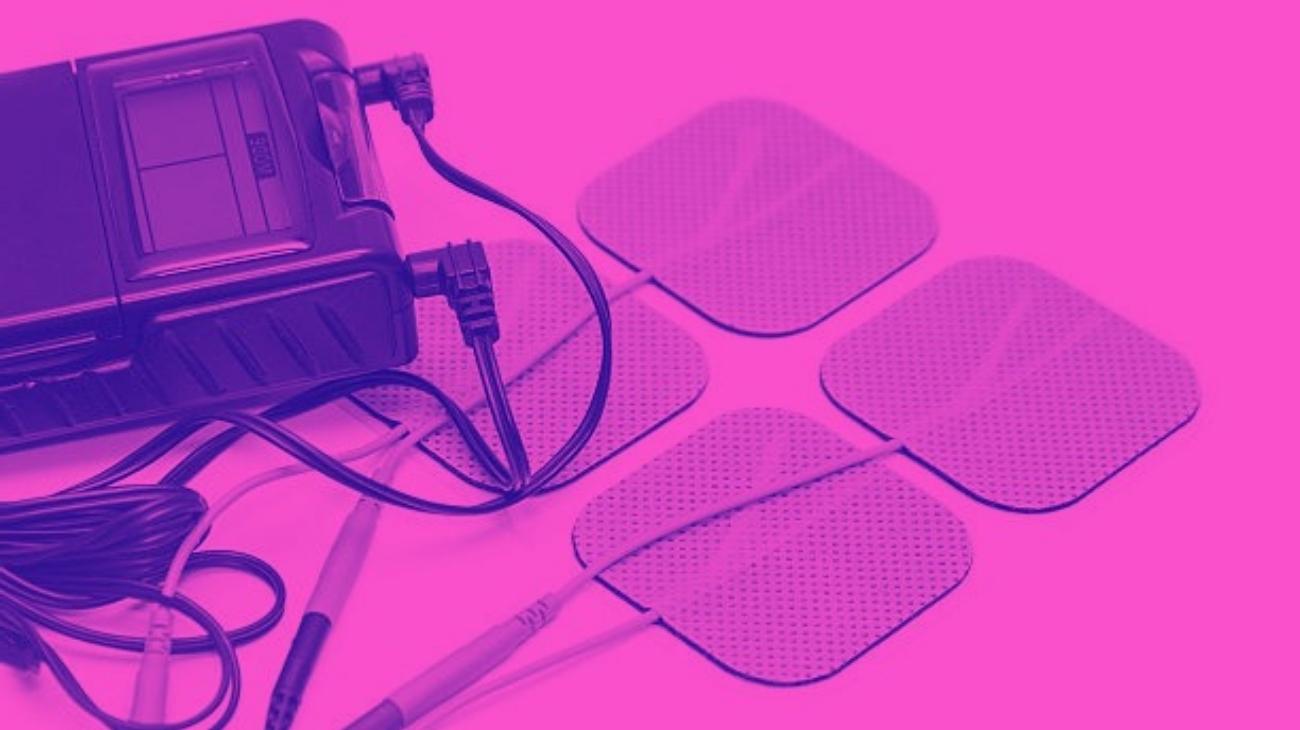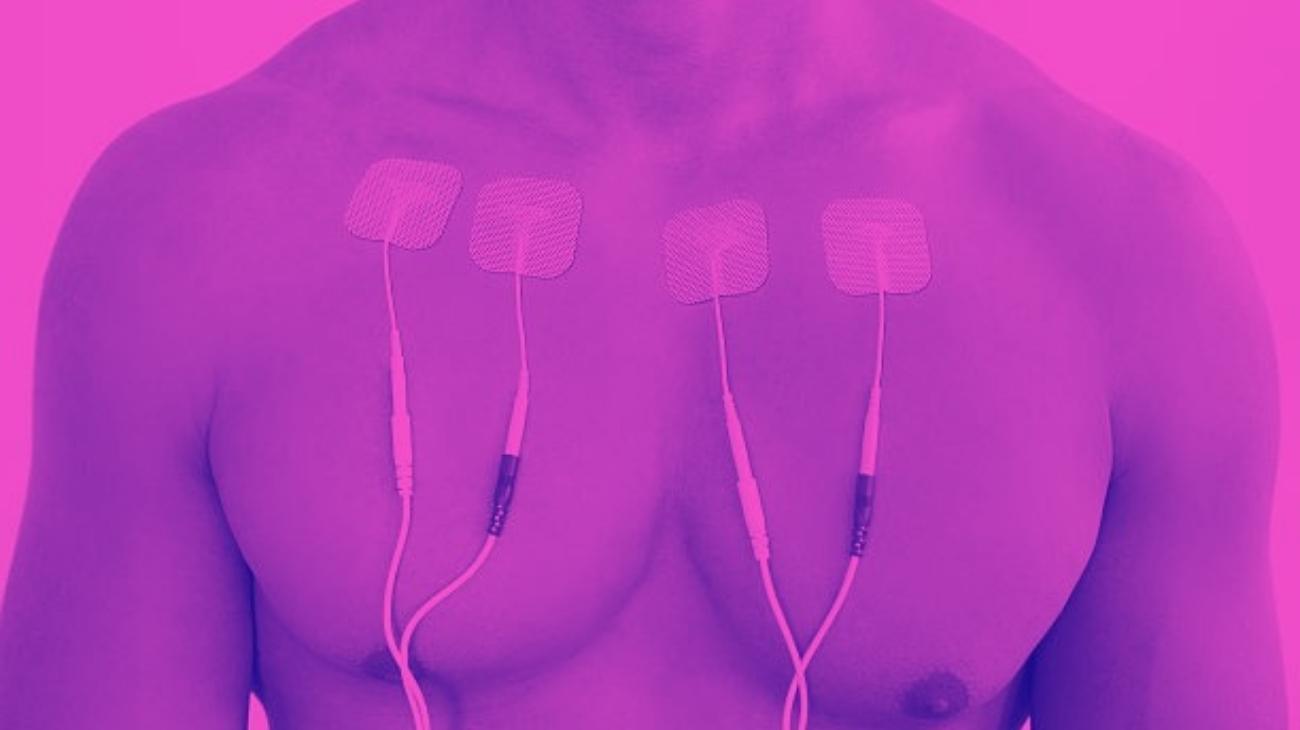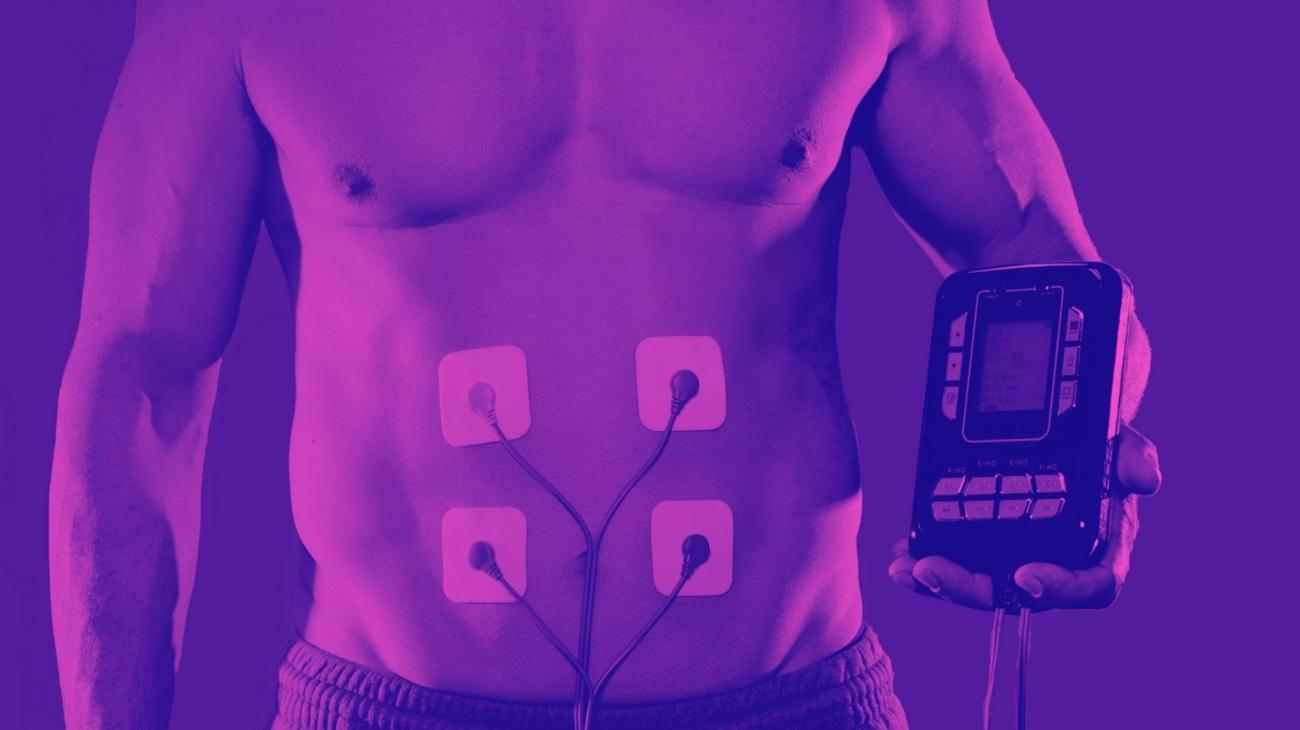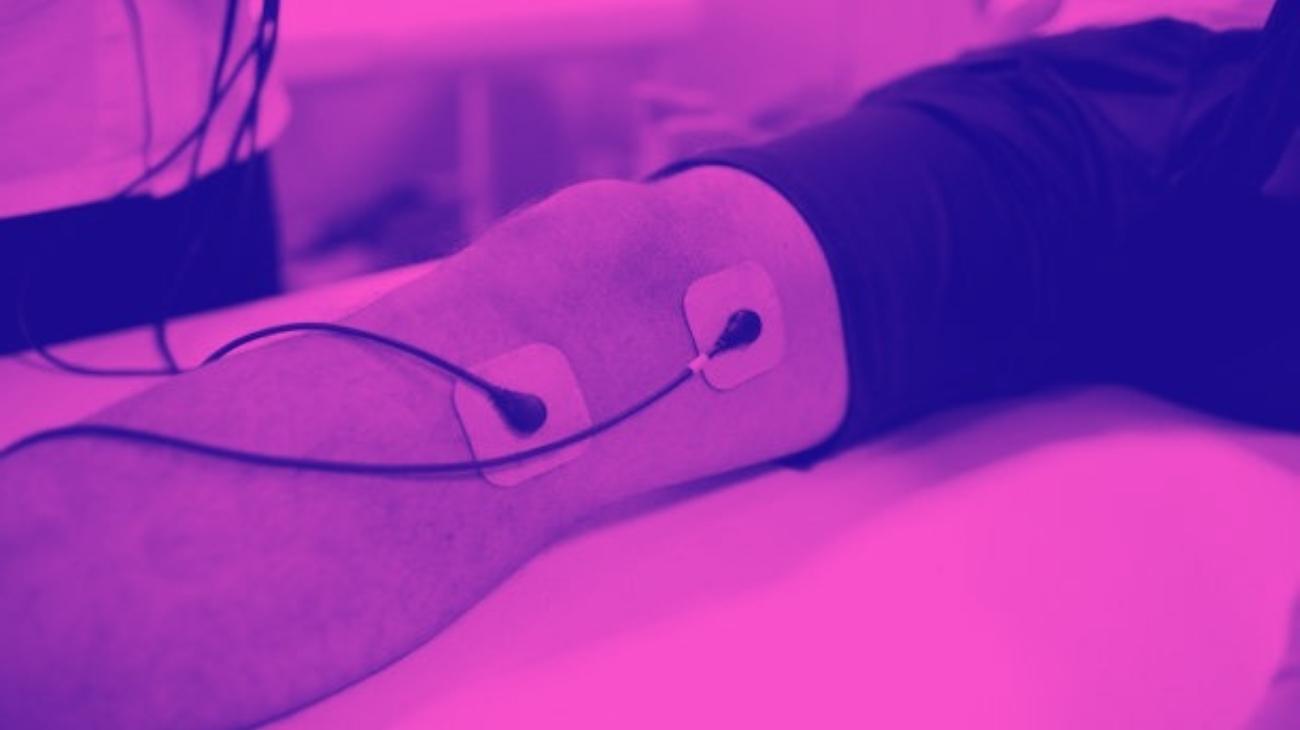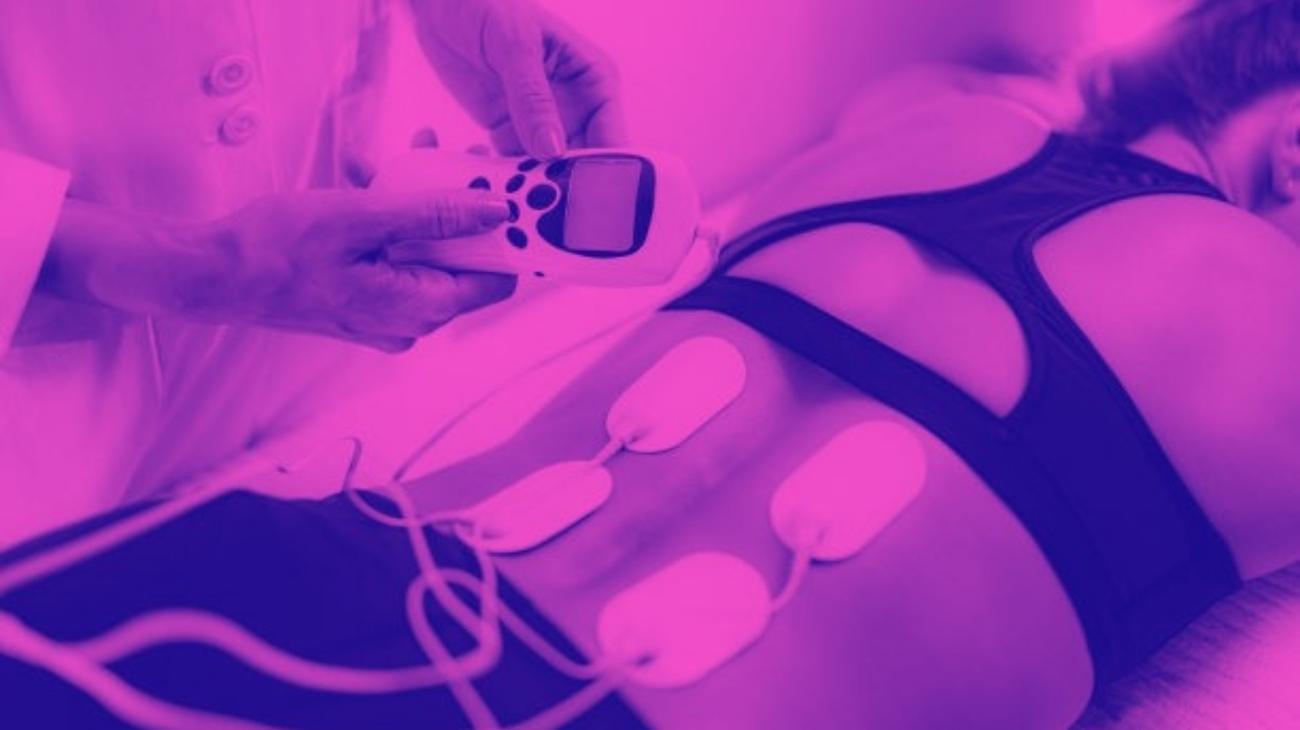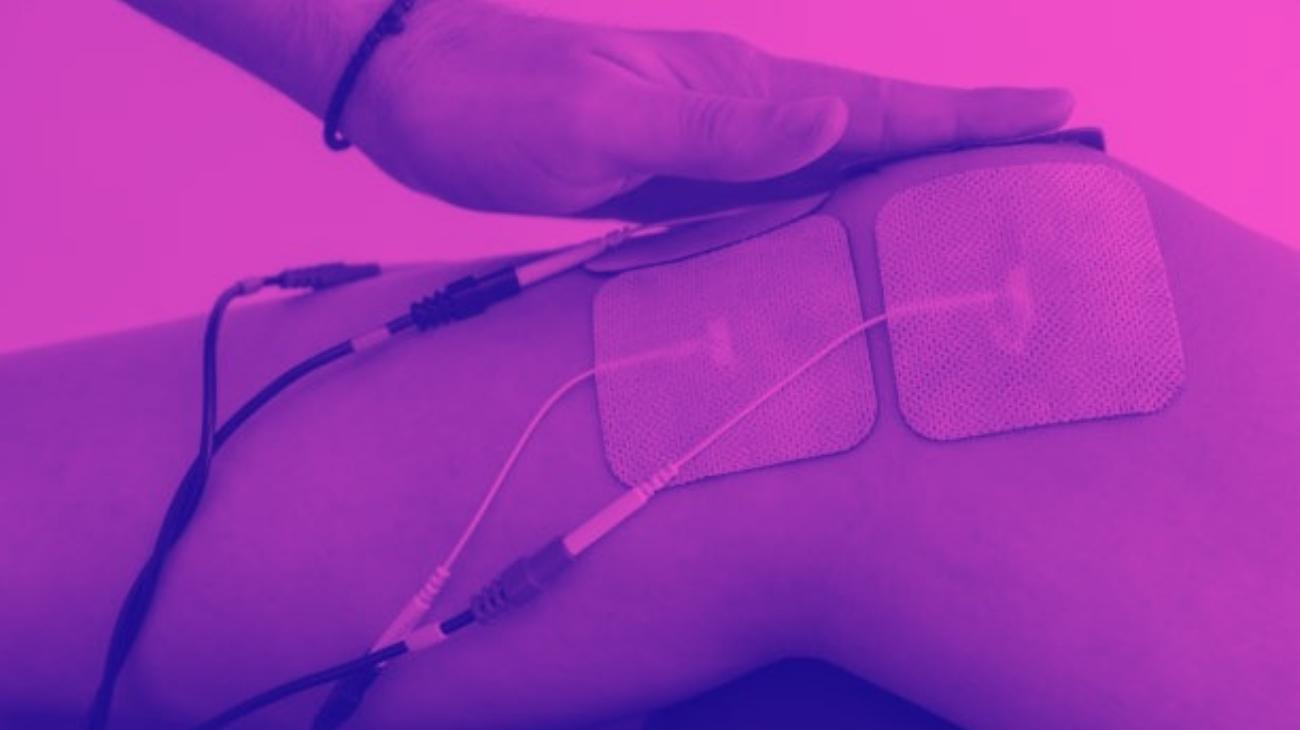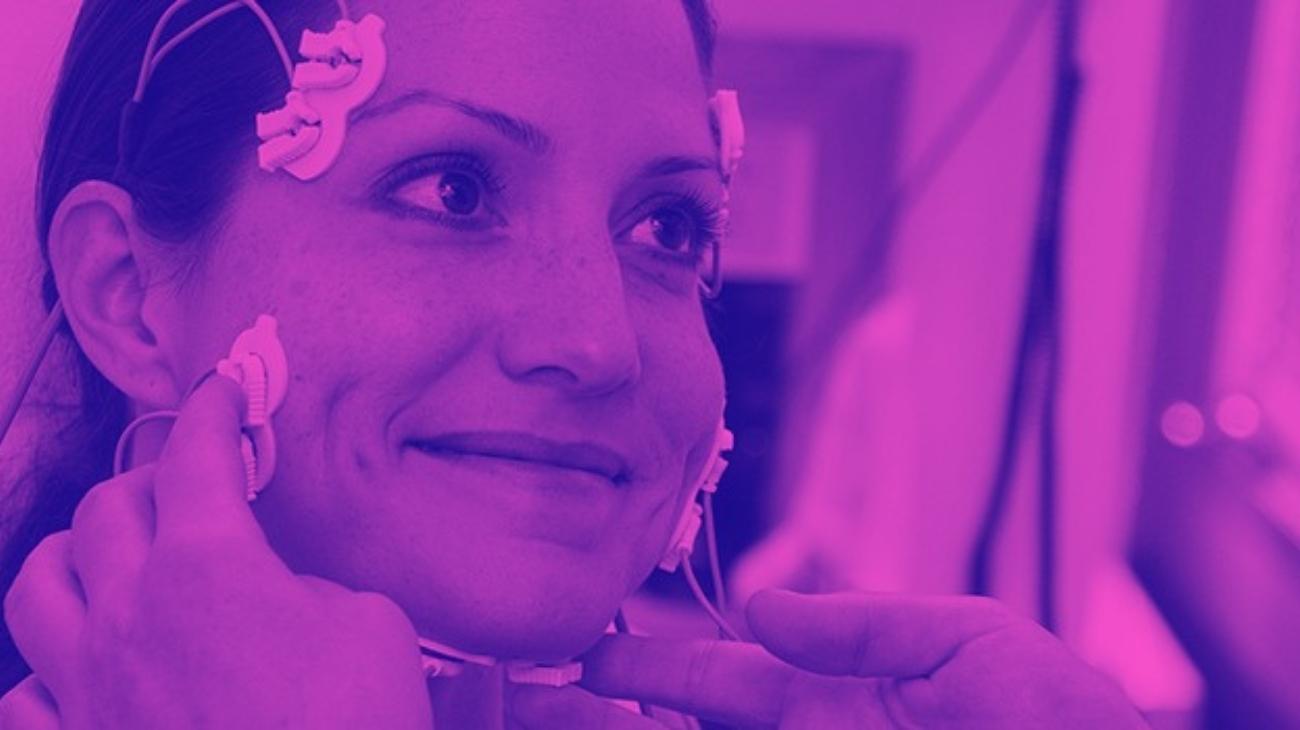- How to use TENS machines to relieve peripheral neuropathy pain?
- Best TENS units to treat nerve damage in the feet and legs
- How to use EMS to strengthen muscles and prevent peripheral neuropathy?
- Best EMS machines to prevent nerve damage in feet
- Video: How to place the electrodes pads on the foot?
- More types of EMS electrostimulators and TENS machines you should know
- What is neuropathy and what are the causes?
- What are the most common types of neuropathies?
- Differences between TENS and EMS: Which is better for treating damaged nerves in feet?
- Contraindications in the use of electrodes and electrotherapy
Hands and feet are densely innervated appendages, so they have a high sensitivity. This causes nerve damage in these areas derived from certain diseases and disorders to generate ailments that are mainly centered in the hands and feet, limiting body functions to different degrees.
This kind of disorder is known as peripheral neuropathy or peripheral polyneuropathy, which is a very limiting disorder for the performance of the human body. In this article, we will teach you everything you need to know about peripheral neuropathy, its causes and symptoms, as well as how to use TENS and EMS electrotherapy methods to treat this disorder.
How to use TENS machines to relieve peripheral neuropathy pain?
The application of TENS therapy for the treatment of neuropathy obeys certain criteria that need to be applied to ensure the effectiveness of the treatment. These are the positioning of the electrodes on the affected areas and the intensity of the current applied to it.
Where to place the electrodes?
The ideal positioning of the electrodes should follow the line of the peroneal nerve and the ramifications of the sciatic nerve in order to cover most of the innervation of the foot, so the most precise locations are as follows:
- Midline of the calf, two-thirds of the distance to the insertion of the Achilles tendon.
- Depression between the medial malleolus and the Achilles tendon.
This positioning is ideal for stimulating the nerve endings of the lateral and sural quater nerves, minimizing the sensation of pain in the patient.
Which current to use?
Peripheral neuropathy affects a large number of nerves in the body, although its main effect is the pain perceived by the patient in legs and feet, for which it is necessary to apply a TENS electric shock of varying intensity, depending on the level of pain.
The range of effectiveness of the shock is quite wide, working with the application of electrical impulses varying from 2 to 100 Hz for periods of 20 to 60 minutes, in order to relax the sciatic and peroneal nerves and reduce the sensation of pain.
Best TENS units to treat nerve damage in the feet and legs
Since peripheral neuropathy is a nerve disorder, TENS therapy is particularly effective in treating its symptoms, so it is possible to find a wide variety of TENS devices with the right settings to deliver an effective session. Among the best TENS units are the following:
- Type: TENS
- Channels: 2
- Modes/Programs: 9 Programs
- Intensity: 15 Levels
- Wireless: Yes
- Heat therapy: No
- Battery: Rechargeable
- Electrodes: Not specified
- Display: Digital
- Size: Not specified
- Improves blood circulation
- Includes user manual
- Accelerates recovery from sports injuries
- Portable and small size
- Includes carrying bag
- No heat therapy
- No battery life specified
- Size and weight not specified
It has a wide variety of pre-programmed modes of use designed to treat a wide range of ailments. Its compact size makes it incredibly convenient to carry wherever you want, and its specialized long-lasting electrodes can be washed and reused up to 150 times. The purchased package contains 1 OMRON E3 electrostimulator, 1 electrode cable and 1 long-lasting pad.
- Type: TENS
- Channels: Not specified
- Modes/Programs: Not specified
- Intensity: Not specified
- Wireless: Yes
- Heat Therapy: No
- Battery: Rechargeable Lithium (300mAh)
- Electrodes: 4 Pads
- Display: Digital
- Size: Not specified
- Reduces pain symptoms
- Includes user manual
- Improves joint mobility
- Portable device
- Improves blood circulation
- Does not include carrying bag
- Does not specify channels and modes/programmes
- Does not specify intensity levels
One of its best features is the presence of a laser line for the nose that will allow you to treat rhinitis symptoms effectively, improving your health conditions considerably. The dual channel function of this rechargeable mini TENS machine allows you to treat multiple parts of the body simultaneously, bringing benefits such as improved circulation, reduced pain and accelerated metabolism.
- Type: TENS
- Channels: Dual
- Modes/Programs: 3 Modes
- Intensity: Not specified
- Wireless: Yes
- Heat Therapy: No
- Battery: 2 AA Batteries
- Electrodes: 16 Pads
- Display: No display
- Size: Not specified
- Includes user manual
- Reduces pain symptoms
- Improves joint mobility
- Improves blood circulation
- Accelerates recovery from sports injuries
- No intensity levels specified
- Does not specify measurements and weight
- Display not included
Its electrostimulation method allows you to relieve chronic ailments through the application of mild electrical stimuli that inhibit pain signals and stimulate the production of endorphins. The best results are obtained when using this unit for 60 to 90 minutes. The use of this device is widely recommended because it does not interfere with any medical treatment and is completely safe.
- Type: Combo
- Channels: Dual
- Modes/Programs: 70 Programs
- Intensity: 50 Levels
- Wireless: Yes
- Heat Therapy: No
- Battery: 3 AAA Batteries
- Electrodes: 4 Pads
- Display: Digital
- Size: Not specified
- TENS+EMS combo
- Improves blood circulation
- Improves joint mobility
- Includes user manual
- Portable and small size
- Does not specify dimensions and weight
- Battery operated
- Touch screen not included
This powerful electro-stimulator offers immediate relief for almost any type of ailment using stimulation methods that stimulate the production of natural analgesic agents within the body. It also works as an effective methods to accelerate muscle growth and regeneration, making it one of the most complete and versatile electrostimulation units on the market.
- Type: Combo
- Channels: Dual
- Modes/Programs: 16 Modes
- Intensity: 20 Levels
- Wireless: Yes
- Heat Therapy: No
- Battery: Rechargeable Lithium (up to 10 hours)
- Electrodes: 4 Pads
- Display: Digital
- Size: Not specified
- Rechargeable battery
- Accelerates recovery from sports injuries
- Includes user manual
- Reduces pain symptoms
- Improves blood circulation
- Transport bag not included
- Does not specify measurements and weight
- No heat therapy
This combination device is ideal for pain relief and can also be used as a massager to relieve persistent tension. It is a non-pharmacological alternative to relieve pain and tension for people suffering from muscular, chronic, nerve and even some acute pain. For those who wish to tone and firm their muscles, the EMS mode of the device stimulates the muscles and improves their performance. For sedentary people, the device promotes local blood circulation.
How to use EMS to strengthen muscles and prevent peripheral neuropathy?
The application of EMS therapy is contraindicated for the treatment of patients suffering from neuropathy, however, it is possible to obtain certain benefits from its use in regions vulnerable to the disease, in order to prevent its onset.
Where to put the electrodes?
The effect of EMS therapy in the prevention of peripheral neuropathy derives largely from the location of the electrodes on the leg and foot, in order to stimulate the muscles necessary to lessen the impact of any nerve damage.
The ideal positions are as follows:
- Mid zone of the tibialis anterior muscle
- Mid zone of the peroneal muscles
- Soleus muscle, on both sides
- Plantar fascia, in the center of the sole of the foot
What intensity to use?
The activation of the muscle tissue that makes up the feet plays a crucial role in preventing nerve damage to the area caused by light impacts, so it is necessary to take into account the parameters required to obtain the best results.
In the case of the foot and leg muscles, the ideal intensity ranges from 65 to 85 Hz, which generates contractions in the muscle groups that increase their strength and reduce the likelihood of nerve damage
Best EMS machines to prevent nerve damage in feet
The effectiveness of EMS treatment for the prevention of neuropathy can vary depending on a number of factors. One of them is the correct application of electric shocks through proper settings on the device. To do this, it is necessary to select the right EMS machine and among the best options we have the following:
- Type: Combo
- Channels: 4
- Modes/Programs: 10 Programs
- Intensity: Not specified
- Wireless: No
- Heat Therapy: No
- Battery: Rechargeable
- Electrodes: -
- Display: Digital
- Size: Not specified
- Accelerates recovery from sports injuries
- TENS+EMS Combo
- Portable and small size
- Rechargeable battery
- Includes user manual
- Size and weight not specified
- No intensity levels specified
- Separate electrodes
In addition, it has a TENS massage mode with which you can treat acute and chronic ailments caused by various conditions. It has 10 modes of use: 1 for pain treatment, 1 for physical rehabilitation, and 8 physical training programs. All these features make it the number one choice for increasing physical performance in a completely natural way.
- Type: Combo
- Channels: 2
- Modes/Programs: 10 Programs
- Intensity: 20 Levels
- Wireless: No
- Heat Therapy: No
- Battery: Rechargeable Lithium
- Electrodes: 8 Pads
- Display: LCD
- Size: 8,3cm x 6,3cm x 0,5cm
- Reduces pain symptoms
- With adjustable timer
- Accelerates recovery from sports injuries
- Includes carrying bag
- Improves blood circulation
- No battery life specified
- No weight specified
- No heat therapy
It features 10 pre-programmed massage modes and 20 intensity levels that target different types of ailments and injuries. It has a session timer function that allows you to adjust the duration of the sessions and has a lithium battery that allows you to apply therapy for more than 20 consecutive hours.
Beurer - Digital dual channel TENS/EMS device with heat therapy, 70 programs and 50 intensity levels
- Type: Combo
- Channels: Dual
- Modes/Programs: 70 Programs
- Intensity: 50 Levels
- Wireless: Yes
- Heat Therapy: Yes
- Battery: Rechargeable Lithium
- Electrodes: 4 Pads
- Display: Digital
- Size: Not specified
- With heat therapy
- Incl. user manual
- TENS+EMS combo
- Accelerates recovery from sports injuries
- Reduces pain symptoms
- No battery life specified
- Transport bag not included
- Does not specify dimensions and weight
This powerful electrostimulation equipment offers immediate relief for almost any type of ailment using stimulation methods that stimulate the production of natural pain relieving agents within the body. It also works as an effective methods to accelerate muscle growth and regeneration, while combining with heat therapy to provide one of the most complete treatments you will find.
- Type: Combo
- Channels: -
- Modes/Programs: 15 Programs
- Intensity: Not specified
- Wireless: Yes
- Heat Therapy: No
- Battery: Rechargeable Lithium
- Electrodes: 4 Pads
- Display: No display
- Size: Not specified
- TENS+EMS combo
- Control from mobile app
- Rechargeable battery
- Includes user manual
- Reduces pain symptoms
- No battery life specified
- No intensity levels specified
- Does not specify dimensions and weight
The simple interface of the PowerDot app will guide you through everything you need to know to operate the electrodes efficiently. The purchase package includes 2 pre-loaded pods, 2 sets of electrodes with corresponding pads, 2 sets of cables and 2 micro USB charging cables, along with a carrying case so you can take your electrodes with you wherever you go.
- Type: Combo (TENS+EMS)
- Channels: 4
- Modes: 15 Programmes
- Intensity: Not specified
- Wireless: No
- Heat therapy: No
- Battery: 4 AAA
- Electrodes: 8 Pads
- Display: LCD
- Size: Not specified
- Improves blood circulation
- Includes 15 modes
- Independent control mode
- Reduces pain symptoms
- No rechargeable battery
- Does not specify intensity and size
It also has a session timer that allows you to control the duration of the therapies. You will be able to set the time of each session in an interval between 10 and 80 minutes. The package includes 1 electro stimulator, 4 sets of guide wires, 4 pairs of electrodes, 1 electrode case, 3 AAA batteries, 1 pad positioning guide and 1 user manual.
Video: How to place the electrodes pads on the foot?
Electrodes for feet
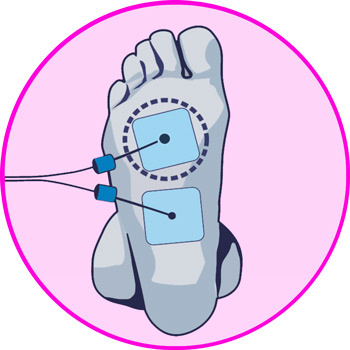
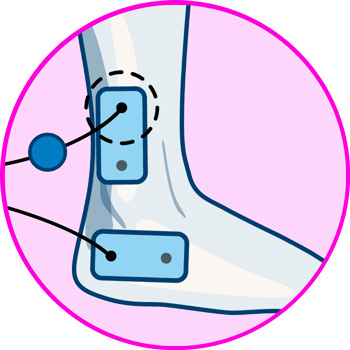
More types of EMS electrostimulators and TENS machines you should know
What is neuropathy and what are the causes?
Neuropathy is a disorder that occurs as a result of damage to the nerves of the peripheral nervous system, which are located outside the brain and spinal cord, affecting various areas of the body, although its effects are usually accentuated in the hands and feet.
The main symptoms of this disorder are:
- Weakness
- Numbness in hands and feet
- Shooting and tingling pain
- Digestive problems
- Circulation problems
There is a wide variety of causes for which a patient may develop peripheral neuropathy or poly neuropathy, among the most common we can highlight the following:
- Traumatic injuries
- Infections
- Metabolic diseases
- Genetic causes
- Exposure to certain toxins
- Diabetes
What are the most common types of neuropathies?
Nephropathy is not a disease that has different types, since it is a condition with quite specific symptoms, so it is easily identifiable. However, it is classified according to different criteria. These are the following:
- Function of the affected nerves: neuropathy can affect both motor and sensory branches in the affected nerves.
- Time of evolution: less than one month is classified as acute neuropathy, after that it is known as chronic neuropathy.
- Forms of development: this classification separates neuropathy into hereditary and acquired forms.
- Guillain-Barré syndrome: disease that causes autoimmune response against the nervous system, causing the symptoms of neuropathy.
Differences between TENS and EMS: Which is better for treating damaged nerves in feet?
Electrotherapy is a very valid method for treating the symptoms of neuropathy when applied correctly. For this reason, it is necessary for the person applying the therapy to be aware of the difference between TENS and EMS electrotherapy modalities.
TENS, or Transcutaneous Electrical Nerve Stimulation, is a therapeutic technique focused on treatment at the nerve level, which makes it particularly effective for treating pain caused by nerve damage that characterizes neuropathy.
Among the main characteristics of TENS we can highlight the following:
- It works through the use of low intensity electric currents, ranging from 1 to 250 Hz.
- It focuses on pain relief at the nervous level.
- Its function is to numb the pain receptors located in the sensory branches of the peroneal nerve, which is predominant in the innervation of the leg and foot, and mainly affected by neuropathy.
- It is one of the most effective options for the treatment of neuropathy.
The focus of EMS, or Electrical Muscle Stimulation is very different, since its function is centered on physical conditioning rather than pain treatment and can be differentiated by the following characteristics.
- It applies currents with a higher base intensity, reaching a minimum of 70 Hz and up to 150 Hz.
- It focuses on muscle conditioning to increase strength, endurance and elasticity.
- Its impulses provoke contractions that favor the regeneration of muscle fibers.
- It is a technique widely used for recovery from muscle injuries.
For this reason, TENS is the best choice when it comes to the treatment of pain caused by peripheral neuropathy. This is because the main cause of pain related to this disorder is caused by nerve damage, which makes the electrical impulses of TENS therapy particularly effective in pain relief.
In contrast, the application of EMS therapy is counterproductive for the relief of pain caused by neuropathy, since its high-intensity electrical discharges generate contractions that can negatively stimulate the nerve endings of the peroneal nerve, causing an increase in the sensation of pain in the affected area.











